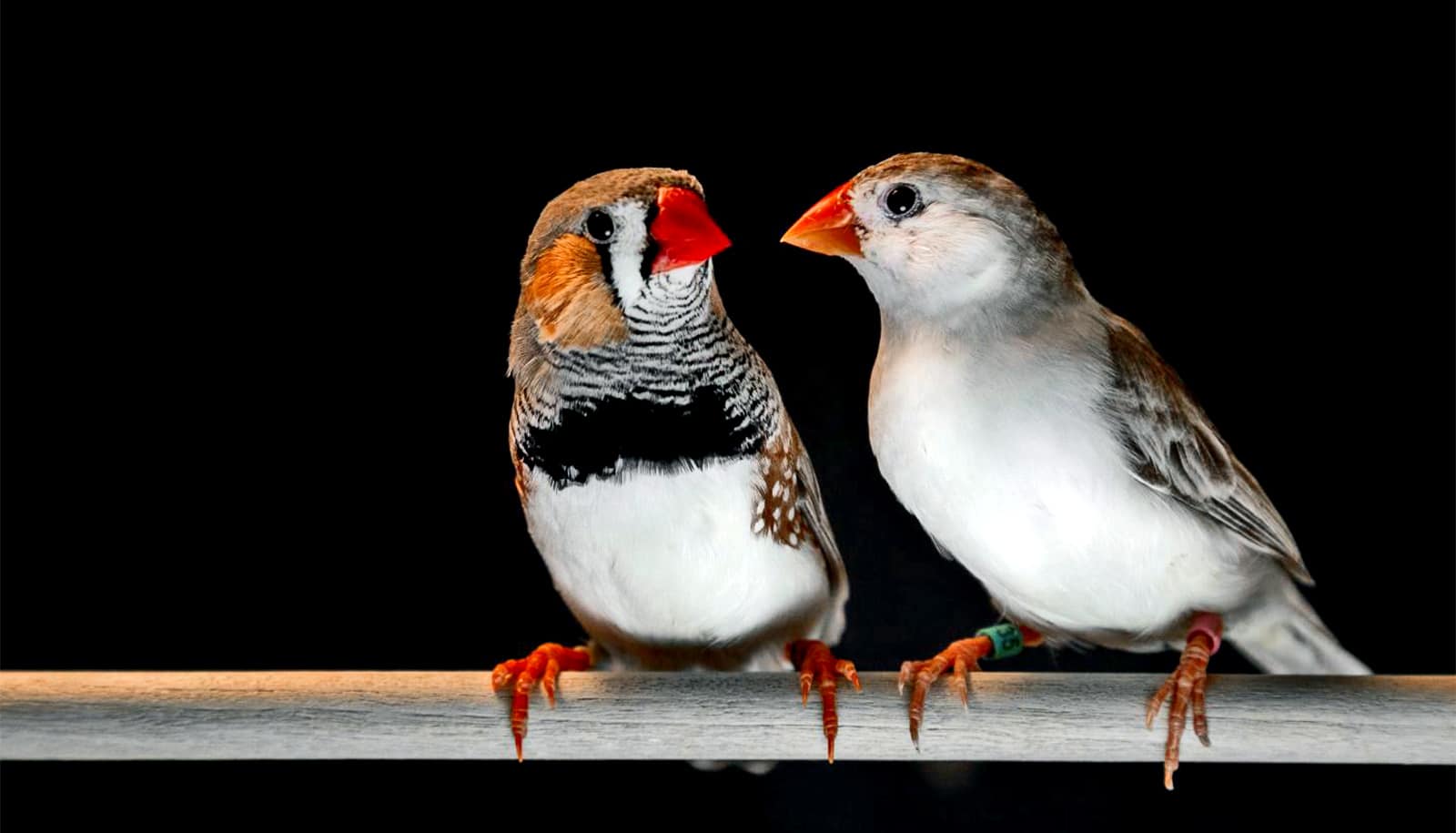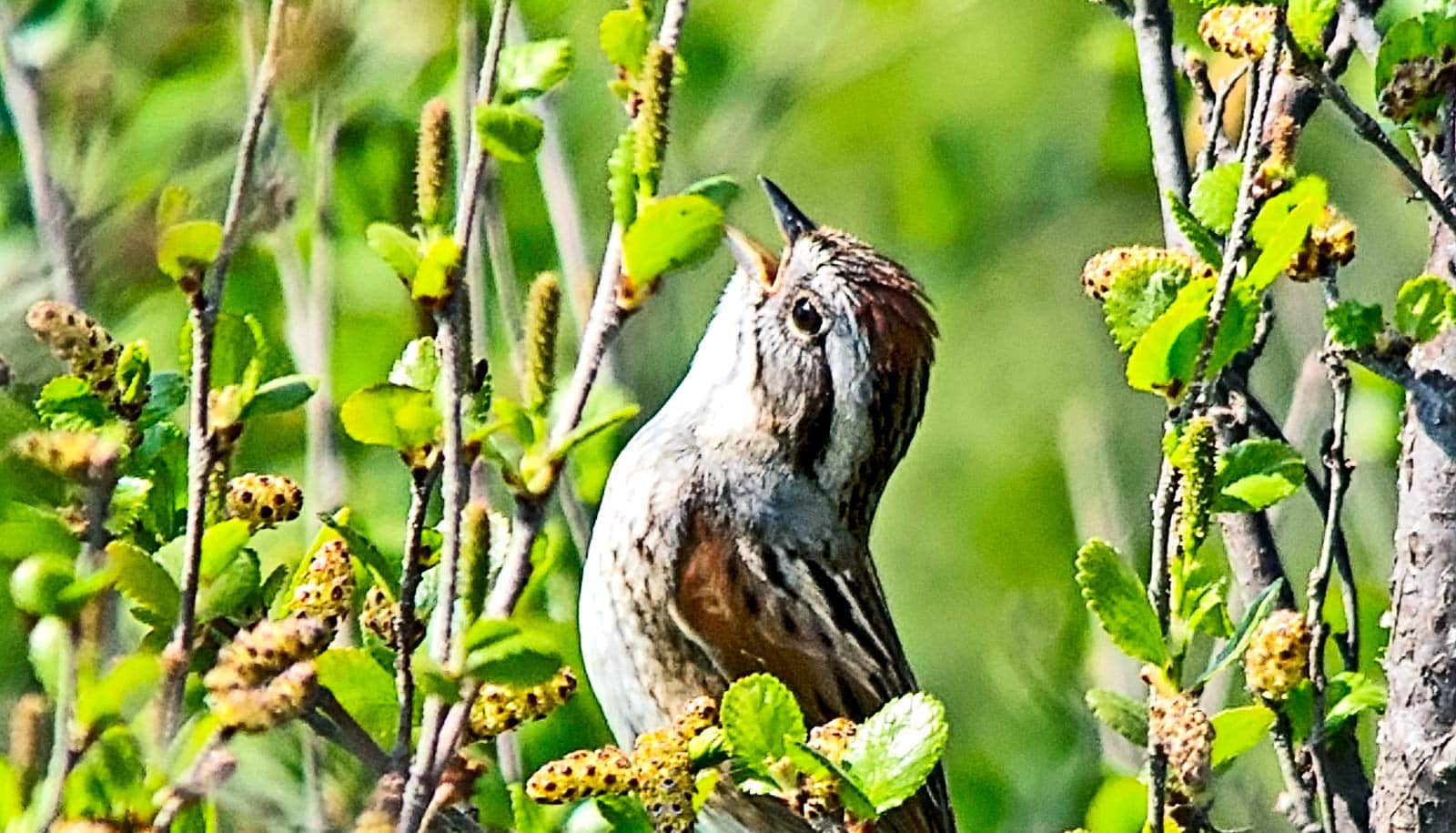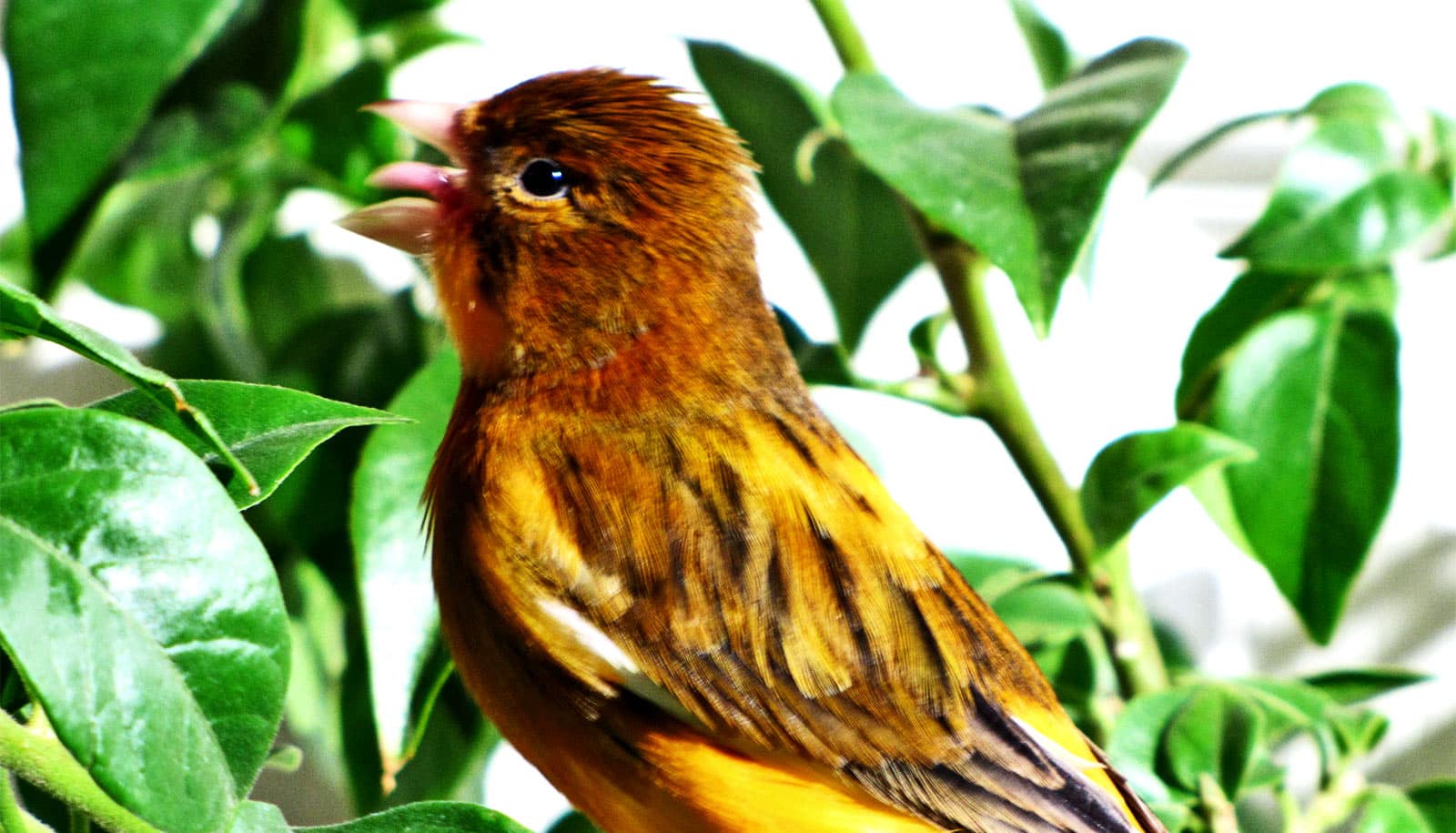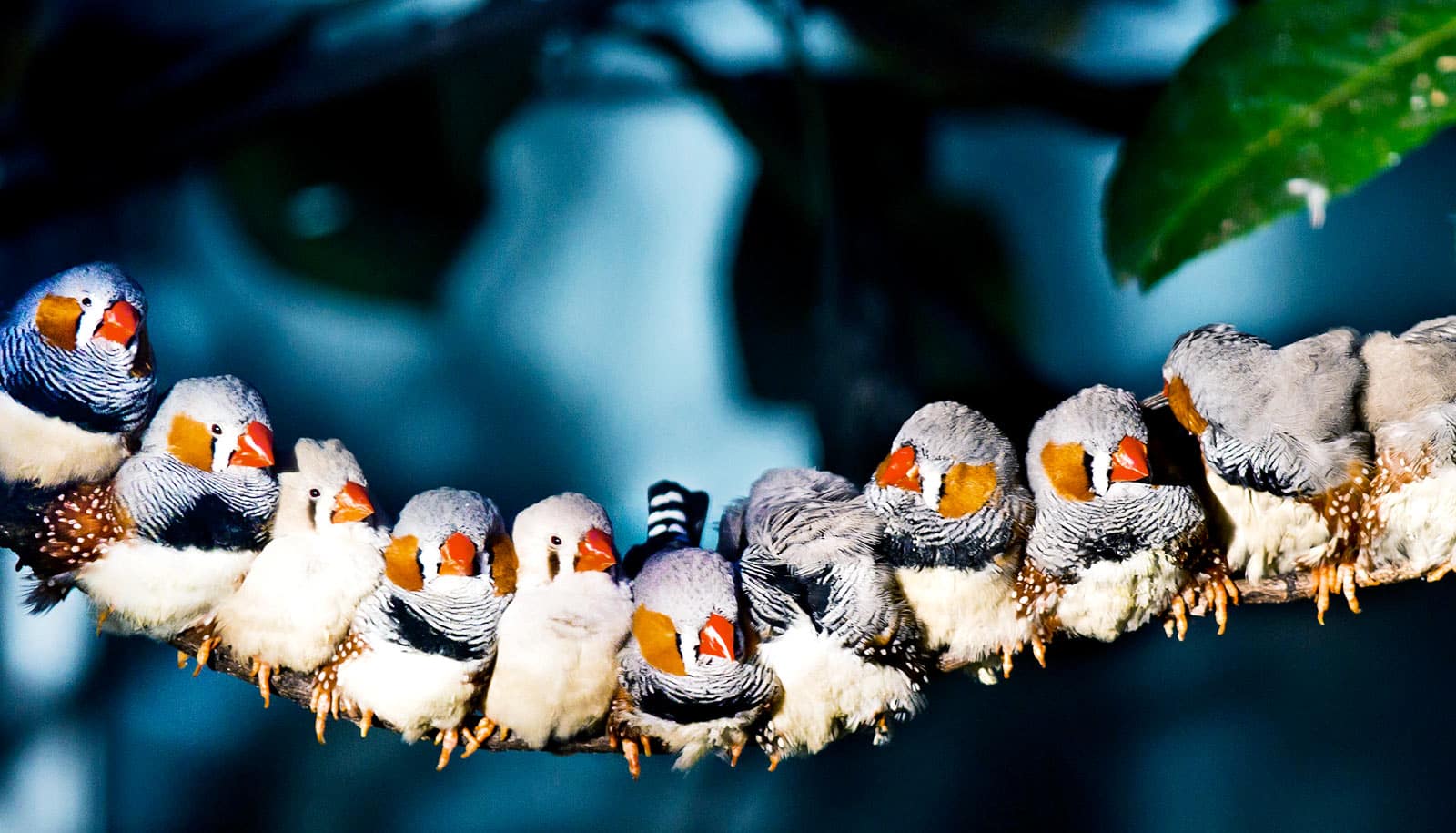The song phrases of many songbird species follow patterns that are similar to those used in human speech, researchers have found. At least in some respects.
If you listen to songbirds, you will recognize repeated melodies or phrases. Each phrase is made up of distinct sounds, strung together.
The songbirds the researchers studied, like humans—no matter what language they speak—tend to use shorter elements (whether these are words or sounds) when they are putting together longer phrases.
Linguists speculate that this pattern, known as Menzerath’s Law, may make communication more efficient by making things easier to understand or say.
But the researchers suggest that, at least in songbirds, physical factors such as muscle fatigue and limited lung capacities may also play a role. They also speculate that similar factors could contribute to seeing Menzerath’s Law in humans. Do physical elements play a role in songbird (and human) vocal patterns?
“Although we see Menzerath’s Law in all the songbird species we looked at, and others have seen it among primates and penguins, we aren’t sure this necessarily reflects enhanced communication efficiency in non-human animals,” says Jon Sakata, a professor in McGill University’s biology department and the senior author of the paper. “It is possible that these patterns of communication that we saw in songbirds are caused by physical predispositions and constraints.”
Interestingly, Sakata also notes that the brain mechanisms regulating breathing and vocal muscles seem to be organized in similar ways in birds and humans.
The idea that physical elements may play a role in these song patterns is supported by the fact that when the researchers compared the song patterns of birds that had been typically reared and tutored by their parents with those that had not been taught to sing by their parents (untutored birds), they found the same patterns.
“The individual units of sound made by untutored birds were very different from those made by the typically raised birds,” says Logan James, the first author of the paper and a former PhD student in Sakata’s lab, now a postdoctoral fellow at the University of Texas at Austin. “However, the ‘rules’ by which they organize these aberrant elements is indistinguishable from typically raised birds. These results suggest that physical predispositions or limitations may play a role in producing these song patterns.”
Further work will need to be done in this area to see whether this is indeed the case. For example, work linking species variation in the strength of Menzerath’s Law to species variation in the biomechanics of vocal production would be a useful next step.
The research appears in Current Biology.
The Natural Sciences and Engineering Research Council of Canada; MEXT/JSPS KAKENHI; the Centre for Research on Brain, Language and Music; and a Heller award funded the work.
Source: McGill University



